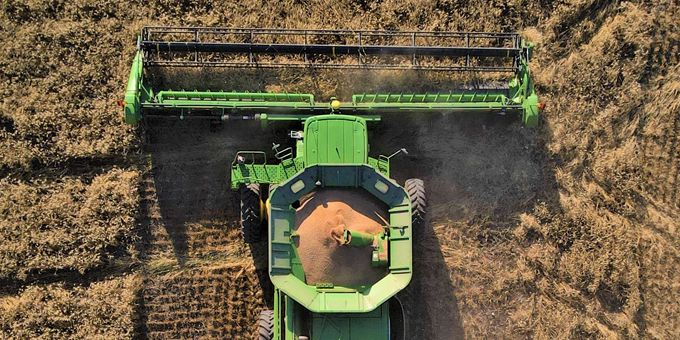AI and machine learning solutions can help identify new microbial strains with beneficial agricultural properties, marking them as good candidates to improve biologicals such as biopesticides, biofertilizers, and biostimulants.
 The Role of AI and Machine Learning in Advancing Sustainable Biologicals in Agriculture
The Role of AI and Machine Learning in Advancing Sustainable Biologicals in Agriculture

Russ Putland, EVP Commercial and General Manager, USA | Lavie Bio, a subsidiary of Evogene Ltd. (EVGN).
The global population is expected to reach 9.7 billion by 2050, which will increase pressure on the agriculture industry to boost crop yields. In recent years, the use of agricultural biologicals, like bio-fungicides and bio-inoculants, are breaking new ground and distinguishing themselves from traditional synthetic products and chemical pesticides, thanks to their environmentally friendly nature. The potential market for these biologicals globally is expected to reach $25 billion by 2027.
But growth in this market also faces challenges. Even though more farmers (and consumers) are demanding more sustainable products, skepticism and lack of clarity about biologicals is keeping many from actually adopting them. Therefore, the biologicals sector must implement clear standards and take a data-based approach to the development and marketing of biologicals, especially integrating more AI and ML. If the sector can do this—and I believe it can—the opportunities for investors, farmers and ultimately for every person on earth to benefit from increased crop yields, will increase dramatically.
Fear of Change and Justified Skepticism Around Biologicals
Despite the benefits of sustainable biologicals—and the mounting evidence of the harmful effects of chemical pesticides on both our food and the environment—- many farmers remain skeptical about their effectiveness. In a survey conducted by CropLife magazine, 41% of survey respondents cited a “lack of trust in the product’s performance” as a major reason why biologicals have a hard time finding market acceptance, with 15% stating that “conventional products are better than biologicals in the field.”
This is partly due to the traditional nature of agriculture, but it also comes from the biological industry’s failure to have clear standards for products. The low barriers to entry in the existing biological marketplace has led to poorly defined standards and sub-optimal efficacy levels for many products. The industry has suffered from lack of local efficacy trials, lack of robust scientific validation, and limited availability of data. And historically, many biologicals didn’t work as well in general. Today, the new wave of offerings are more effective, consistent, stable, and commercially viable, but the lack of clear standards leaves farmers in the dark about the growing number of revolutionary biologicals.
Implementing clear industry standards and practices
While the success of some companies can boost credibility for the sector, it is important that there are clear standards in the biologicals industry to increase confidence in this class of products overall. Even just a few untested and unproven products out there can damage the reputation of all of those that do have scientific validation.
That means we need clear regulatory processes and registries for biologicals. There has indeed been some progress, including the EU’s creating a specific definition for biological crop protection, and the U.S. EPA’s registry of biological crop protection products. But standards for these types of products remain lower than for traditional chemical fertilizers, which continues to hold back trust in biologicals in general, even though many can be just as effective, if not more effective, than traditional products.
Embracing AI in the Development of Biologicals
The use of advanced technology can revolutionize R & D in the biologicals sector. For example, AI and machine learning solutions can help identify new microbial strains with beneficial agricultural properties, marking them as good candidates to improve biologicals such as biopesticides, biofertilizers, and biostimulants. Studying the genetic profile of seeds, and how they respond to specific proteins and enzymes within prospective biological applications is also valuable.
In addition, the vast amounts of data provided by agtech platforms on factors such as soil health, irrigation, and weather patterns, can provide a complete picture of how biologicals work, enabling the creation of more accurate and effective products tailored to specific crops, climates and use-cases. This information can be included in marketing materials, and used to boost farmer’s adoption of new products.
Using AI/ML Data to Connect with Farmers
Makers of biologicals should provide decision-making support to growers, enabling farmers to make informed biological decisions rooted in science and data – most notably, when to use them and how to apply them effectively. If farmers have data about biologicals and how they work, they can combine this knowledge with the insights they have on their operations.
For example, many farmers analyze soil nutrient levels, and can identify areas that require specific amounts of fertilization or other treatments. These predictions are made possible using machine learning algorithms. AI/ML can also help farmers analyze and predict the circumstances that contribute to crop disease and pest outbreaks, which cause significant harm to crops. AI-powered data-analysis can recommend targeted interventions such as the application of specific sustainable biologicals.
With this information, farmers can make informed decisions to optimize the efficacy of their biologicals. Applying them at the right time and at the right rate can also help farmers increase profitability, while embracing more sustainable growing practices..
Additionally, the makers of biologicals, by analyzing data on farmer behavior, market trends, and other factors, can identify barriers to adoption and develop strategies to overcome them.
A data-based approach, embracing AI and ML, to the development and marketing of sustainable biologicals will lead to their rapid adoption and entrenched use, while ensuring consistent levels of efficacy and eliminating the residual skepticism that remains among many farmers. For the biologicals sector, this will unlock potential growth while also helping to ensure an adequate food supply for the growing global population.

About Russ Putland
Russ Putland’s agricultural career spans over 3 decades, with ‘ground up’ experience in both front line/in-country facilities and large multinational organizations. Russ has served in regional and national sales leadership roles across companies such as Cargill and DuPont. Throughout his career, Russ has been instrumental in key corporate reorganization and internal marketing efforts, IT, operations, change and account management strategies. Russ currently serves as Executive Vice President Commercial and General Manager USA at Lavie Bio, a subsidiary of Evogene Ltd. (EVGN).
The content & opinions in this article are the author’s and do not necessarily represent the views of AgriTechTomorrow
Comments (0)
This post does not have any comments. Be the first to leave a comment below.
Featured Product


